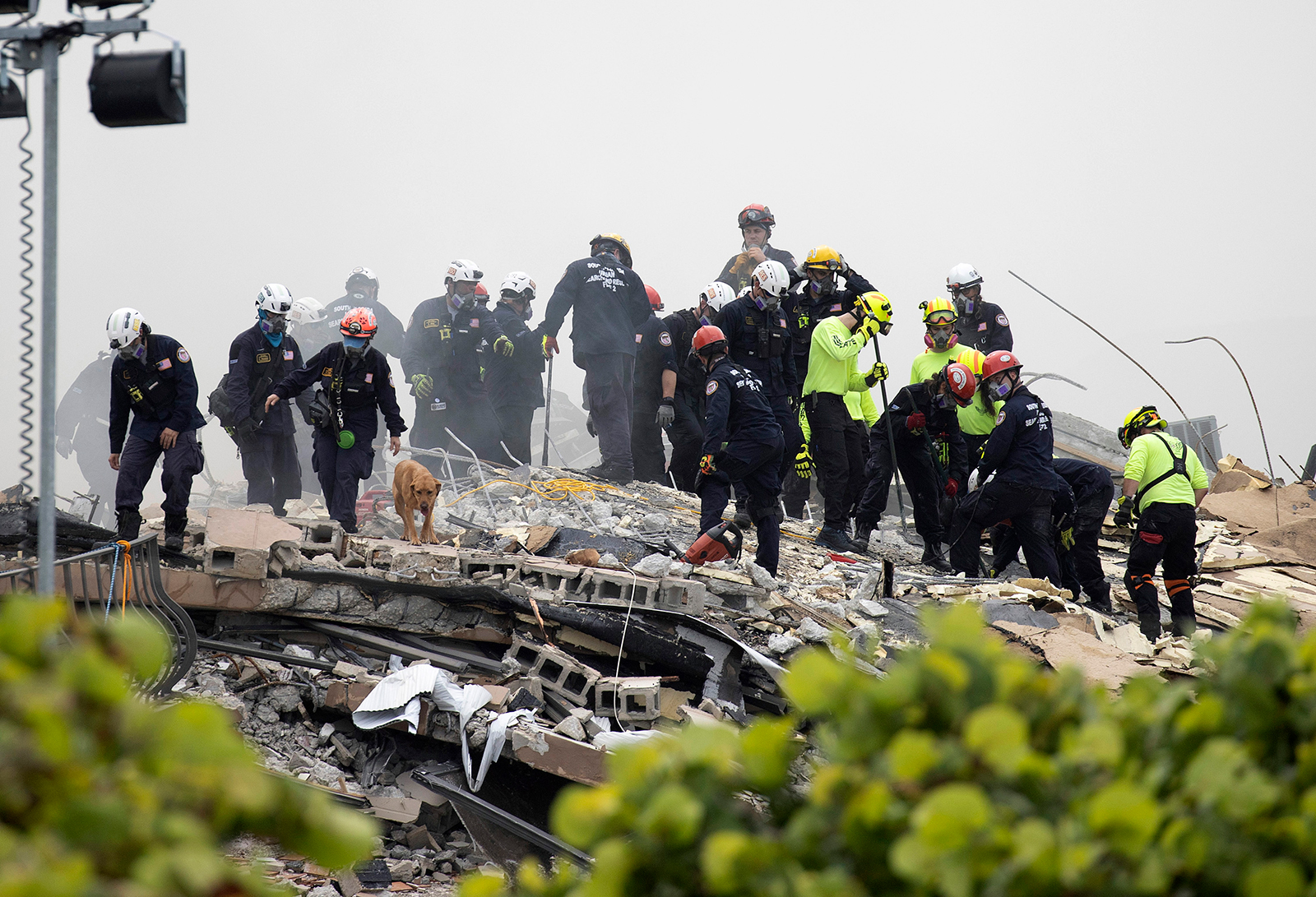Structural engineers have been shoring up areas of the collapse to allow search crews to tunnel underneath with light machinery

It’s still not fully clear what caused an oceanfront condo tower in Surfside, Florida, to partially collapse, sending some units in the 12-story building plummeting to the ground.
Experts are still looking to determine the exact contributing factors that led to the catastrophe. But from what investigators know, the building appears to have fallen in a “pancake collapse,” Miami-Dade Fire Rescue District Chief Jason Richard told CNN, though evidence of other types of collapses are present, too.
Pancake collapses are dangerous and severe, and their damage can complicate search-and-rescue efforts. Here’s how they happen.
About pancake collapses: Pancake collapses are so named for the way collapsing floors land and stack as they fall, said Gregg Favre, executive director of the St. Louis Regional Response Systems, a former commanding officer with the St. Louis Fire Department and experienced special rescue team member.
“Pancake collapses tend to ‘stack’ floors on themselves, bringing all their weight down nearly square on the floor below,” Favre told CNN. “This continues down, accumulating more weight and stress as the structure falls.”
A pancake collapse is a “progressive failure” that often begins at the bottom: A load-bearing element is damaged, usually in a building’s lower floors or foundation, which triggers the top floors to collapse vertically into the floors below, said Necati Catbas, a professor in the Department of Civil, Environmental, and Construction Engineering at the University of Central Florida. “Once there is ‘no’ support at the bottom floors or foundation, the top floors start pounding on the from top to bottom in progressive manner,” Catbas said in an email to CNN.
Why they’re dangerous: A pancake collapse is more dangerous than other collapses, Favre said, because there are often few voids, or pockets of space and air, in the rubble. “The sheer tonnage of materials … makes it very difficult for void spaces to exist,” Favre said.
Pancake collapses also complicate search-and-rescue missions, he said, because the structures that remain near the collapse site are unstable and could fall as rescuers move through the rubble.
Voids can still be present, though, particularly when multiple kinds of collapses are present, as in the incident in Surfside, said urban search and rescue expert Scott Goldstein.
Goldstein told CNN there was evidence of four collapse types in the Surfside incident. Aside from a pancake collapse, that includes a V-shaped collapse, when the center of the floor collapses and creates voids on either side; a lean-to collapse, when a floor collapses on one side while the other side is still attached to a wall; and a cantilever collapse, when one wall supporting floors is damaged but the opposite wall is intact. Void spaces are more likely in V-shaped, lean-to and cantilever collapses.
![]()


